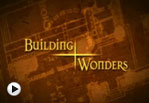Learning Activity: Investigating The Granary Building
- Resource: Photo of The Granary Building, Welsh Back
- Date of resource: built 1869
- Architects: Ponton and Gough
- Resource located: Welsh Back, Bristol’s Floating Harbour, Bristol
Description of resource:
This Victorian building was built in 1869 by Ponton and Gough. It has elements of Venetian, Moorish and Byzantine architecture and uses local bricks from the Cattybrook brickworks in Almondsbury. The bricks are of three colours: red, yellow, and black, which is typical of the Bristol Byzantine style. It has seven grain floors, with many patterned ventilations openings to aid the drying of the grain. Originally hot air from furnaces in the brick insulated basement was piped upwards to dry the grain. The ground floor has round exit holes for the chutes to release the grain. The basement and ground floor now form a restaurant and bar and the remainder of the building is divided into apartments, with an internal light column, top provide additional natural lighting.
Support materials:
- Image of the Granary building
- Image of the Coliseum Rome, Italy
- Map
- Digital camera
Techniques and questions for investigating this building
- What materials do you think the building is made from?
- Is the building damaged or well preserved?
- What type of people do you think used the building in the past?
- Do you like the design of the building? Why?
- Do you think it was easy to build?
- What craftsmen were involved in the design and construction of the building?
- Was the building expensive to make? Why?
- Imagine what it would be like to live or work in this building
- Look for oddities in the building and consider why they might have been included
- Has it been inspired by another building? The Granary uses lots of arches similar to those of the Coliseum Rome, Italy.
- Has the building use changed? If so what other uses has it had? What different kinds of people have used it during its history?
- The bricks used in this building were made just outside Bristol. Consider if using local materials is useful and why?







